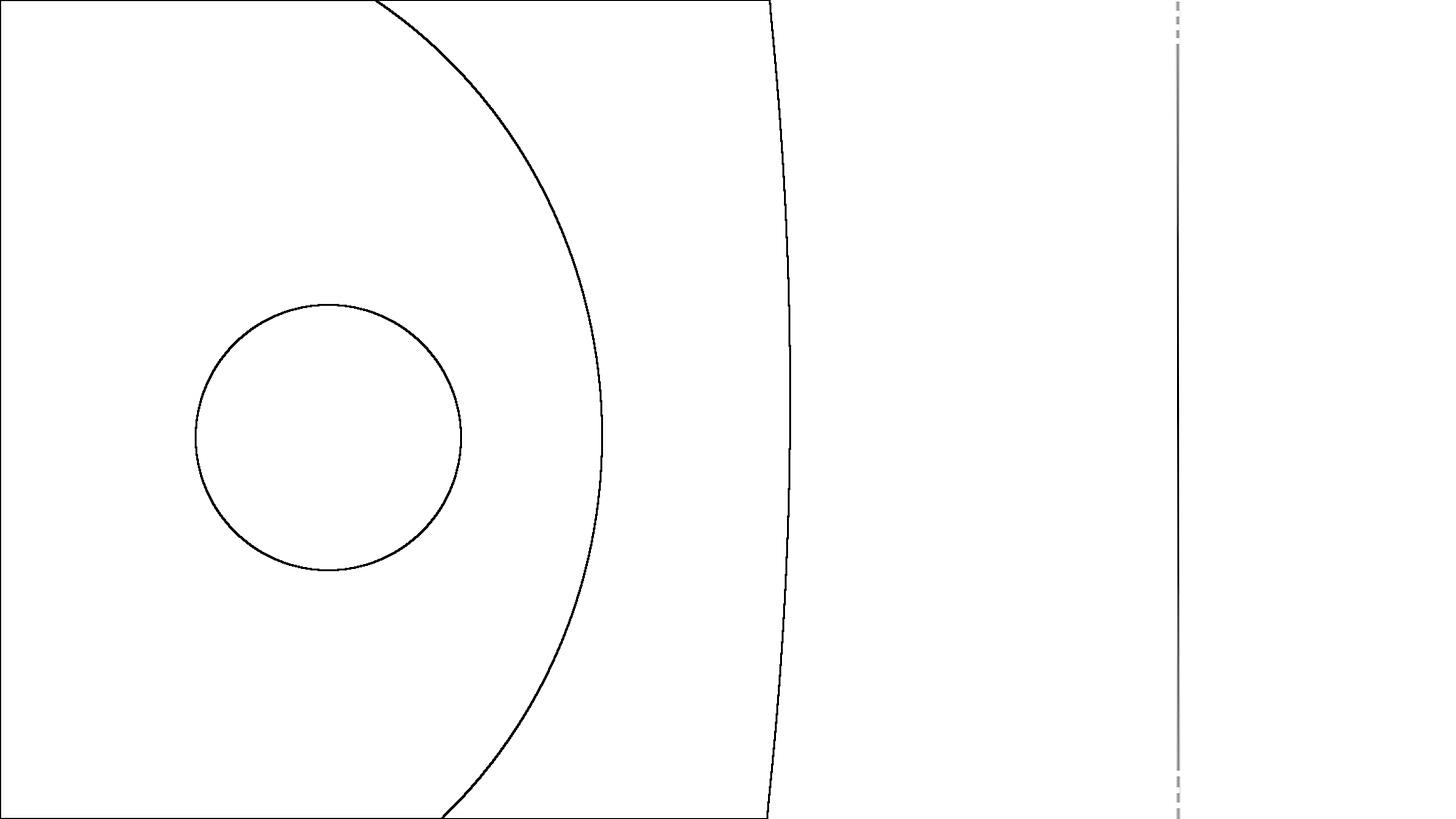‘Nicholas of Cusa's concept of coincidentia oppositorum between an infinite circle and an infinite line’. Drawing by Bafuncius, courtesy of Wikimedia Commons
Your success in life depends on how you steer your life - whether you move in circles, in zigzags, or a straight line. This, in short, is the philosophy of Life Coach and Self-help author Dusan Djukich. His book ‘Straight-Line Leadership: Tools for Living with Velocity and Power in Turbulent Times’(2011) introduced the theory of ‘Straight-Line Living’, distinguishing between three types of mindsets for living: ‘Straight-line’, ‘Circular’, and ‘Zigzag’. Each approach describes a different way to move on from your current situation to your desired goals.
Although the book’s title is ‘Straight-Line Leadership,’ it can be used by anyone who wants to become more effective in life. Djukich argues that people can resolve challenges and improve decision-making regardless of their position or role in society by taking responsibility for their actions and cultivating accountability.
Straight-Line Living
The Straight-Line mindset focuses on the actions required to reach clearly defined goals, from point A (the present) to point B (the desired future), without unnecessary detours or distractions.
Djukich emphasizes the importance of the ‘Inner Stance’ - the attitude that shapes an individual's actions and decisions. By using what he calls 'distinctions', essential concepts that act as tools for personal and professional growth, individuals can gain clarity and awareness about their actions and the choices they make. Rather than living on autopilot, individuals can use distinctions to avoid unproductive behaviors and to choose more effective approaches to achieve their goals.
Many obstacles to action are merely excuses caused by fear or uncertainty about the future and can be overcome by commitment to action. Rather than be satisfied with just trying, commitment drives an individual to pursue a goal regardless of the circumstances and to take full responsibility for his actions, whether successful or not.
Djukich suggests practical steps to pursue Straight-Line Living:
Daily Reflection: Regularly assess your inner stance and the distinctions you are operating from.
Set Clear Goals: Define what you want to achieve in simple terms, breaking down larger goals into manageable tasks.
Take Immediate Action: Identify the next step needed to progress towards your goal and act on it without delay.
Challenge your Excuses: When faced with obstacles, question whether they are real or just excuses for avoiding action.
Seek Simplicity: Look for simplicity in your plans and actions, avoiding unnecessary complexities that can slow down progress.
Djukich believes that there are many reasons people find themselves in circular or zigzag living patterns. Understanding these reasons can help in moving to a more effective, straight-line approach.
Circular Living
Circular Living happens when people are caught in a loop, repeating an unproductive behavior over and over again while hoping for a different outcome, confusing activity with actual accomplishment. This leads to a lack of movement toward the desired goals, resulting in a sense of helplessness and low vitality.
Reasons for Circular Living
Lack of Intention: Usually Circular Living shows a lack of clear intention or purpose, with people engaging in repetitive behavior without making any meaningful progress, resulting in complacency and inertia.
Information Overload: Individuals with a circular mindset mistakenly believe that success depends on obtaining the right information. They continuously look for new knowledge postponing action for later, with the pursuit of knowledge becoming a substitute for real results.
Avoidance of Responsibility: People following this approach usually complain and justify their lack of action with excuses, avoiding taking responsibility for their actions.
Zigzag Living
In Zigzag Living, individuals show inconsistency in their actions - with sudden bursts of productivity followed by periods of inactivity, starting and stopping again and again. They may reach short-term goals but fail to show long-term results, struggling to sustain their achievements and frequently losing direction.
Reasons for Zigzag Living
Inconsistent Action: Zigzag individuals have sporadic bursts of action but lack the consistency needed to reach results, alternating between periods of high performance and inactivity.
Focus on Comfort: Individuals often prefer engaging in familiar activities rather than focusing on what is required to achieve their goals.
Jim Rohn, an American entrepreneur and author once said:
"We must all suffer from one of two pains: the pain of discipline or the pain of regret. The difference is that the pain of discipline weighs ounces while the pain of regret weighs tons".
Straight-Line Living embodies this philosophy - stepping out of one’s comfort zone and confronting the pain of the discipline required to commit to consistent action.



